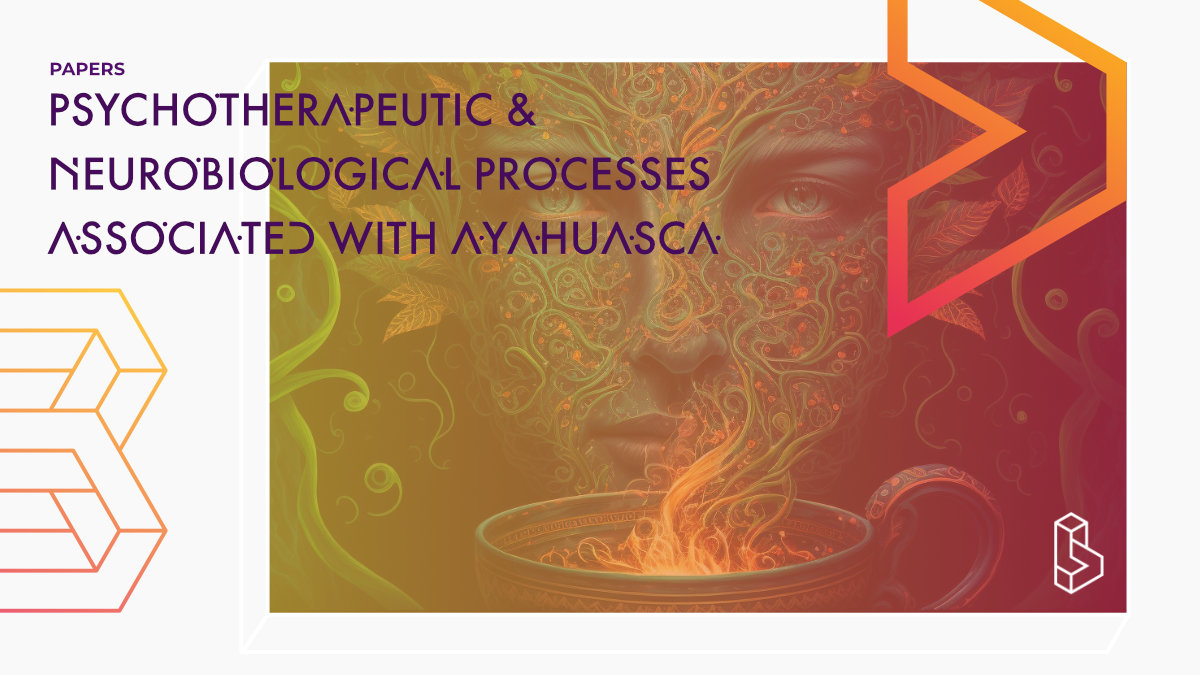This theory-building article (2023) proposes a model of psychotherapeutic processes associated with ayahuasca consumption. It identifies five key effects: somatic effects, introspection and emotional processing, increased self-connection, increased spiritual connection, and gaining of insights and new perspectives.
Abstract
“Ayahuasca is a psychoactive Amazonian plant brew. It is usually made from the Banisteriopsis caapi vine (Spruce ex Griseb. Morton, Malpighiaceae), which contains three primary harmala alkaloids, along with the leaves of Psychotria viridis (daRuiz et Pavon, Rubiaceae) in which the potent psychedelic dimethyltryptamine (DMT) is found. DMT-harmaloid concoctions have gained popularity in recent years, due to growing anecdotal and scientific reports of therapeutic benefits associated with their consumption. Ayahuasca is now ingested in a variety of different settings across the globe, from traditional ethnobotanical to so called “neo-shamanic” ceremonies. Furthermore, related preparations involving alternative sources of DMT and harmala alkaloids are becoming increasingly common as knowledge of ayahuasca continues to spread internationally. This article reviews the existing literature and draws on original qualitative data from a large cross-sectional study of ayahuasca drinkers, to propose a model of psychotherapeutic processes associated with the consumption of ayahuasca. We assert that it is these processes, facilitated by a range of neurobiological effects, that lead to beneficial mental health and wellbeing outcomes. Our proposed model identifies five key psychotherapeutic processes or effects inherent to the ayahuasca experience; somatic effects; introspection and emotional processing; increased Self-connection; increased spiritual connection, and finally the gaining of insights and new perspectives. We note some important differences in these processes compared with other classic psychedelics as well as the implications of the model for the therapeutic use of ayahuasca. Improved understanding of the psychotherapeutic processes involved with the ayahuasca experience will better equip practitioners to work with this potentially transformative concoction and enable the optimization of therapeutic treatment models for potential clinical use.”
Authors: Daniel Perkens, Simon G. D. Ruffell, Kimberley Day, Diego P. Rubiano & Jerome Sarris
Summary of Psychotherapeutic and neurobiological processes associated with ayahuasca
Ayahuasca is a DMT-harmala alkaloid-based traditional medicine used by indigenous cultures in the Amazon basin for healing, spiritual and other purposes. It produces powerful changes in awareness and consciousness.
Ayahuasca is used in several Brazilian syncretic religions and has been adopted as a religious sacrament by many other countries. It is also used in underground indigenous-styled neo-shamanic ceremonies.
This article presents a novel model of the psychotherapeutic processes underlying ayahuasca’s reported mental health and well-being benefits, which is informed by existing literature and qualitative data from the Global Ayahuasca Project (GAP).
Study details
Compounds studied
Ayahuasca

